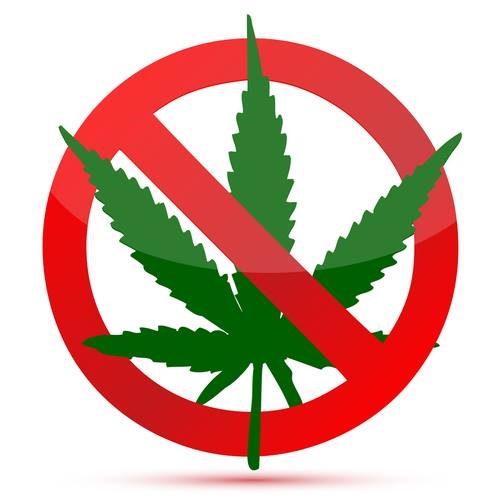Sometimes a clinical link between events is known – corroboration attests to a potential causal tie. Sometimes that tie is not reported widely, since it is politically unpopular, empirical yet incomplete or inconvenient. Oddly, or perhaps not so, mass shootings have a tie to chronic marijuana use.
Analogies are useful. After WWII, data emerged showing that soldiers – who had been given plentiful cigarettes in MREs – were showing links to lung cancer. By the 1950s, the cigarettes-cancer link was clear But not until 20 years later, in 1975, were cigarettes taken out of MREs.
Now consider the marijuana-violence link. If the link is proven with increasing fidelity to facts and tied to violence, that would be highly inconvenient. Not only would marijuana sellers be on the hot seat, but so would politicians who have been pushing the drug’s legalization.
Yet facts are mounting. They relate to general violence and specific incidents. The latter are anecdotal but deeply concerning.
Start with logical questions. Do those who break societal norms, becoming inordinately violent, do that because they are already mentally ill and happen to “self-medicate” with marijuana – or does the use of marijuana – specifically THC – contribute to their violence, impairing core judgment, reducing empathy, creating psychoses, and cascading addictions?
Definitions matter. What exactly is “psychosis?” It is ways in which people lose contact with reality. Drugs tend to do that, which is why they are used – to produce that dissociation. Clinical examples of psychosis span the gamut, from anti-social behavior, paranoia, demoralization, schizophrenia, and depression to violence. Not all who use drugs are psychotic, but some are.
Many studies tie marijuana to psychosis.
The National Institutes on Drug Abuse reports on the link’s strength. “…Smoking high-potency marijuana every day could increase the chances of developing psychosis by nearly five times compared to people who have never used marijuana.”
Other data is similar. Recently, the medical journal Lancet reversed itself, recognizing major studies on marijuana use show “an increase in the risk of psychosis of about 40 percent.”
Likewise, a Swedish study of 50,000 found those who tried marijuana prior to 18 had 2.5 times more likely to develop schizophrenia, while heavy THC users were 6.5 times more likely.
And what exactly is “schizophrenia?” “A long-term mental disorder of a type involving a breakdown in the relation between thought, emotion, and behavior, leading to faulty perception, inappropriate actions and feelings, withdrawal from reality and personal relationships into fantasy and delusion, and a sense of mental fragmentation.”
Other studies link marijuana to schizophrenia and wider psychoses. A 2011 study of 2000 teens, published in the British Medical Journal, shows a doubling of psychosis for marijuana users, of whom 13 percent turned schizophrenic.
A 2014 study found 1.5 percent of Americans were regular marijuana users, yet they accounted for 11 percent of hospital psychoses, or roughly “90,000 cases, 250 a day, triple the number in 2006.” This suggests a tight link – and growth of the affected population.
Other major studies, including one by the National Academy of Medicine, closely tie clinical psychoses to marijuana use – but some go further. They draw a link to indiscriminate violence.
A 2017 study identified violent events in which “marijuana led to unnecessary violence…,” noting marijuana was “the single most common, correlative variable in otherwise diverse populations and circumstances surrounding the association of violence and marijuana.”
Some will not want to hear this, but the National Library of Medicine reported in 2020: “(1) Marijuana use causes violent behavior through increased aggressiveness, paranoia, and personality changes (more suspicious, aggressive, and anger); (2) Recent illicit and ‘medical marijuana’ …is of much high potency and more likely to cause violent behavior; (3) Marijuana use and its adverse effects should be considered in cases of acts of violence as its role is properly assigned to its high association; and (4) …High potency marijuana is a predictable and preventable cause of tragic, violent consequences.”
Given this backdrop, what about a tie to mass shootings? If shooters are deranged, anti-social youth with clear psychoses, what is the chance their psychoses ties to regular marijuana use?
Real answer is, we are not sure, but evidence is mounting in support of a material link – and it cannot be ignored. In short, corroboration exists – and appears statistically significant, or beyond random in the tie-back. Surprisingly, the association between regular marijuana use and mass murders is palpable. Experts like Dr. Daniel Amen, a child psychiatrist, are weighing in – as his interview with Dan Bongino attests. Is this because the alienated use drugs, or is it causal?
Data is again helpful. One study notes: “We cannot rule out a connection between increasing marijuana use, mental illness and the recent spate of mass shootings by disturbed young males.” Notably, reported links exist to shooters in Parkland, El Paso, Dayton, Aurora-Colorado, Tucson- Arizona, Chattanooga-Tennessee, Sacramento-California, and perhaps elsewhere.
Bottom line – We do not know what goes wrong in the mind of mass shooters, why they fall into a violent psychosis, leave reality behind, lose their conscience, trade humanity and morality for evil.
What we do know is that their mental health is central to the crime, that many either had mental health issues and turned to marijuana or developed mental health issues – including a propensity for violence – after using the drug (and sometimes multiple drugs).
Prudence, protection of innocents, and pondering how best to prevent acts of violence tied to drug use – and clinically tied to marijuana use – would suggest we think much harder about the link, what expanding access to high potency drugs does to the society. Stakes are high and rising.


